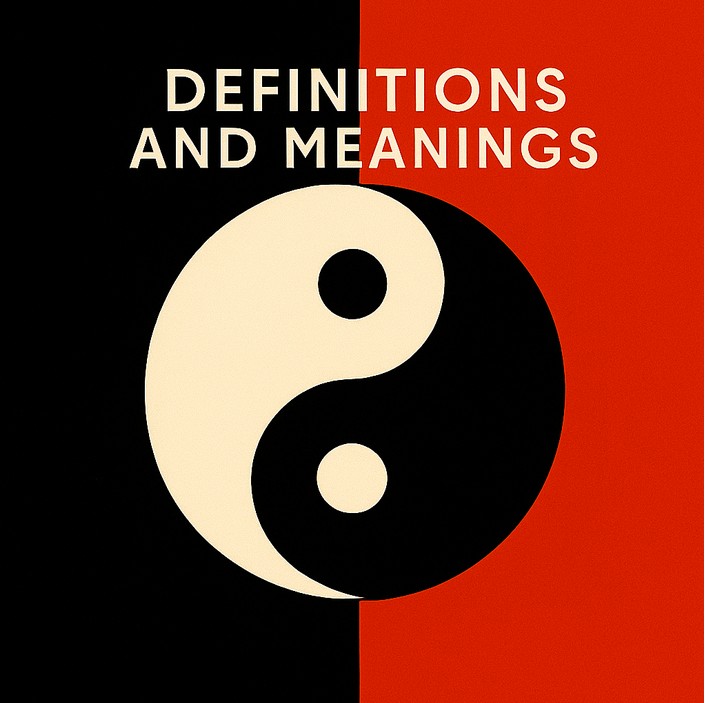How To Live With Contradiction
Beyond Thought Let Stillness Speak
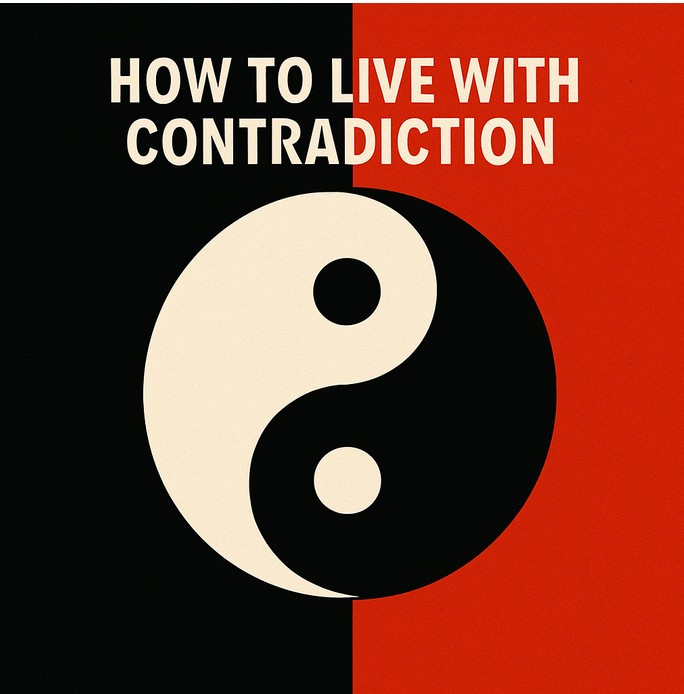
Learning how to live with contradiction is an important thinking skill because life is full of contradictions, or more accurately things that appear to be contradictory.
This is a big subject and one that is easy to get caught up in shooting the breeze with pointless philosophical speculations about the true nature and meaning of life and self-indulgent warm soapy baths of meaningless woo woo platitudes.
My purpose in this article is to show you how to live with contradiction and to provide you with some proven practical tools and resources to achieve this.
Firstly I want to define our terms, then take a brief look at the environment in which we live which will offer some clues as to how to live with contradiction and then to look at some key points that will help us understand how our brain works and how and why it struggles with contradiction, then finally to look at the tools we have and how to apply them.
- Definitions and Meanings
- The Environment In Which We Live
- How Our Brain Works And Why It Struggles With Contradiction
- The Tools And Resources We Have And How To Apply Them
These can include unfulfilled:
- Reciprocal obligations - "I have done these good things for you and you have not returned the favour... "
- Familial expectations - "I expected my Father to be there for me when I was growing up..."
- Relational expectations - "I have loved you so much for all these years and you have left me..."
- Societal expectations - "I expected to be to work for the same major employer in this town as my mother and her mother before her but now these jobs have been out-sourced overseas where labour is cheaper..."
- Transitional expectations - " I thought that leaving my partner and becoming a single parent would give me a whole fresh new start but it hasn't worked out like that and I am caught in even worse drudgery than that which I left...."
- Spiritual expectations - "I have been 'a good and faithful servant' and trusted You but still after all these years You have not answered my prayers..."
Paradox
Paradox is a word that is closely related to contradiction. A paradox is a statement that it appears to contain a contradiction but is constructed in such a way that it reveals or points to a higher truth.
The difference lies in the prefix to each word.
"Contra" in contradiction means against.
"Para" in paradox means beyond.
"Dox" in paradox means thought or to think.
Here are a few examples of paradoxical statements:
- Less is more - suggests that simplicity or a smaller quantity can be more desirable or effective.
- The more you learn, the less you know - how learning can reveal the extent of one's ignorance.
- I can resist anything except temptation - a contradiction to emphasize the power of temptation.
- You have to spend money to make money - the paradoxical nature of investment and risk.
- This statement is false - a classic liar's paradox, where the statement negates itself.
- Be cruel to be kind - actions that appear harsh or unkind can be done with the intention of benefiting someone in the long run.
- The only constant is change - the paradoxical nature of change as a continuous and inevitable force.
Zen koans and sutras frequently employ paradoxes to challenge conventional thinking and guide practitioners toward deeper, non-dualistic understanding.
Their aim is to bypass logical reasoning, move beyond the limitations of language and intellect by confronting the mind with contradictions - to reveal a reality that transcends rational explanation.
The Tao Te Ching is full of paradoxical statements. A more recent example is the late James Carse's Finite and Infinite Games.
Complex systems are all about the dynamics of the interactions between the multiple component parts of the system.
A complex system, such as life, behaves very differently to the classic Newtonian mechanistic view of things.
For example, things happen as a result of the huge number of interactions of all of myriads of parts in life where all the rules of cause and effect often do not apply leading to emergent behaviour, non-linear interactions, unpredictability and uncertainty of outcomes.
All of these characteristics of complex interactions can appear in contradiction to our expectation of how we have been brought up to believe that life works.
In a complex system you gain a better understanding of what is going on by focusing on the dynamics and interactions of the parts. This is an important clue to learning how to live with contradiction and we will be looking at this in more detail in the tools and resources section below.
Here is a brief summary comparing complicated and complex systems, and here is a graphic illustration of the key differences.
Obviously life is infinitely more complex than any one simple model and there is far more going on than we can ever hope to fully comprehend.
But we have to start somewhere, and my purpose here is twofold:
- To expand your thinking and to provide you with a foundation for learning how to live with contradiction, by
- Providing a simple model of how the complex system that is life works.
Beyond these primal functions, the brain has evolved and developed more advanced functions involving conscious thought and the capacity for data processing, analysis, rationality, abstract thought and communication, but it has serious limitations.
This, together with the complex environment in which we live, is why we struggle with whole business of how to live with contradiction.
Here is a short summary of some of the main limitations in our thinking skills:
# The Linear Scanning System Of Conscious Attention

Human intelligence has a serious limitation. It is a scanning system that is linear. It examines the world in lines, as you would pass a flashlight beam across a darkened room, focusing on one thing at a time, sequentially.
For example, to gain an education, we scan millions of lines of information.
We do it that way because that’s the best our attention can do, scanning and taking in one or at least just a few bits of information at a time, one after another.
But the kicker is that the real world doesn’t happen one thing at a time, one thing after another.
The real world is multidimensional, with a lot happening all at once, and it comes at us so fast and all at once in such a way that we could never scan it in the narrow focused linear way humans typically think.
# Thought vs Experience
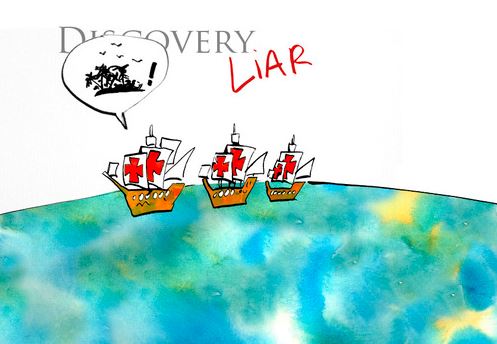
The conscious mind is limited by the abstractions, concepts, beliefs and maps we make to try to make sense of the complex world we live in.
Because
in so doing we confuse 'the world as-it-is' with 'the world
as-it-is-thought-about-and-described'. This is often expressed as
confusing the map and the territory.
We confuse our thoughts and more importantly our emotional associations with an experience – with the experience. Reality is the territory – the unfiltered, uncategorized, direct experience now in the present moment.
# The Limitations Of Language

Developing point two above further, the conscious mind is limited by the torrent of inner noise pouring from our thought stream. We are in a profound sense lost for words.
The concepts we employ, the categorizations we apply and the words we choose and use to articulate a direct experience put us in a double bind, and it is this:
For everything we gain by being able to verbalize and articulate an experience we lose an equal if not greater amount of the full meaning of that experience by the very process of articulation.
# The Limitations Of Context & Framing
The conscious mind is limited by the lost meaning in our words as they are always heard or read within a context and a framing.
What I mean to say and what you hear may not be the same thing.
# Dogmas And Beliefs
The conscious mind is limited by the beliefs it holds and the dogmas that it adheres to.
# Hijacking
The conscious mind is also limited in other ways it because it gets hijacked - here are some of the ways your brain gets hijacked.
The primal part of our brain want us to feel safe and secure and here we are constantly playing catch up as we revise and stretch our inner maps of reality to try to figure out how to live with contradiction and all the uncertainty that comes with it.
Our deep seated fear of uncertainty and it's grip on our sense of self and well being is extraordinarily tight.
Psychologist Dorothy Rowe in "Beyond Fear" has nailed it:
Given the complex and confusing environment in which we live, and
taking on board the limitations of our mental hardware and software how
do we pull all this together, what tools and resources do we have for
learning how to live with contradiction? The operative word in that last sentence is "learning". In
our natural state we are at the mercy of our primal brain. It can be
successfully countered, but that in involves conscious effort and hard
work to form new habits of behaviour and thinking. So what we have got? As a simple model we can think of 3 mental modalities that we have at our disposal: The
reactive mind is the source of your problems but, with conscious effort
from your attentive mind you can change some of your "mental software"
and reprogramme your responses to the noise from your primal brain. You do this by adopting constructive attitudes towards how to live with contradiction, and turning these mindsets into habits. Undertaking this work is an important foundation for the work of the reflective mind. When
you engage with your reflective mind you are stepping back from the
constant chatter of your reactive and attentive minds - you stop thinking - and you let the stillness speak.
I recommend that you adopt these mindsets and make them habits: [1] Develop "Negative Capability" The phrase "negative capability" was first coined by the poet John Keats. It means having the mental strength and flexibility to hold a
number of contradictory ideas in your mind at the same time. This
is a challenge because your brain is hardwired to seek certainty and it
will do everything it can to create a story that will give you that
certainty and it will see cause and effect where there is none. Celebrated blogger Ryan Holiday sums it up rather well: The world is complicated, ambiguous, paradoxical, and contradictory.
To make sense of it, to survive it, you must be able to balance
conflicting ideas.
[2] Wear Your Beliefs Lightly A belief is
something that you accept and believe to be true.
That you believe it to be true does not
necessarily mean that it is true. This is most applicable
to conditioned beliefs, which are the thinking
patterns developed at a young age and are based on the beliefs of your
primary care-givers. Some of these beliefs can be unconscious. These conditioned beliefs become the foundation for your future
beliefs and form the basis of your decision-making and problem-solving. We often hold our beliefs as though they are an immutable certainty. But I have found it helpful to
follow the Buddha's advice and regard beliefs as a guidance as there to serve a purpose, and to be released when that purpose is served.
Don't get stuck with your pre-conditioned beliefs - if they are not helping you - let them go!
[3] Embrace Anomalies An
anomaly is a deviation from what is expected or commonly regarded as
the norm. It often appears as an unexpected observation that defies
conventional wisdom or established theories. It is frequently regarded
as an abberation, a nuisance or an inconvenient interruption to a long
cherished assumption. As Warren Buffett said: "What the human being is best at is interpreting all new information so that their prior conclusions remain intact." But there is incredible value in disconfirming evidence. Two fundamental reasons why you should embrace anomalies are: Pay special
attention to collecting facts which do not agree with your current beliefs and understanding.
[4] Use The Power Of Framing Framing is about communication and how
you create meaning in your communications. This can be in your
communications with others, and more importantly in your internal
communication with yourself. How you mentally characterize a situation has a profound impact on how you respond to it emotionally. The
choices of words that you use have power because of the underlying
emotional associations that they invoke and the actions that result from
those associations. Self talk is the generic term used to describe the inner voices
and scripts that run in the background of our minds and that have a
frightening degree of control over what we think, say and do. This is critical to countering the noise generated by your primal brain. Change the language of your self-talk to change your results.
[5] Experience The Transformative Power Of Acceptance The transformative power of acceptance is
a simple yet extremely powerful mindfulness practise that will
release you from the powerful hold of the negative emotions associated
with the fear of uncertainty, and it will free you to respond to life in
a more flexible way. Just sit quietly for a moment,
take a deep breath and observe the feelings and emotions and thoughts
that are associated with your fears. Follow
these brief and simple steps and your fears
will disappear, and you will feel calm, centred and ready to do what you
need to do. Do not be deceived by the simplicity of these steps, they are very powerful. They work. The only way to cope with all this uncertainty is to accept that it is so.
To engage with your reflective mind and let stillness speak is about
stepping back from the constant chatter of your brain and allowing a
deeper, quieter presence to communicate.
This is not about some woolly, fuzzy, feel-good vibe. This is
about accessing a consciousness that lies deep within you - far deeper
than thought. This consciousness:
In the major faith traditions this consciousness is referred to as the
Christ within, the Buddha nature, Atman in Hindu and Fitra in Islam.
To let stlllness speak is to learn it's first major lesson: you are not your thoughts.
Here are some actions and supporting practices to help you access this stillness and let it speak in your life. If you get stuck just ask.
[4] The Tools And Resources We Have And How To Apply Them
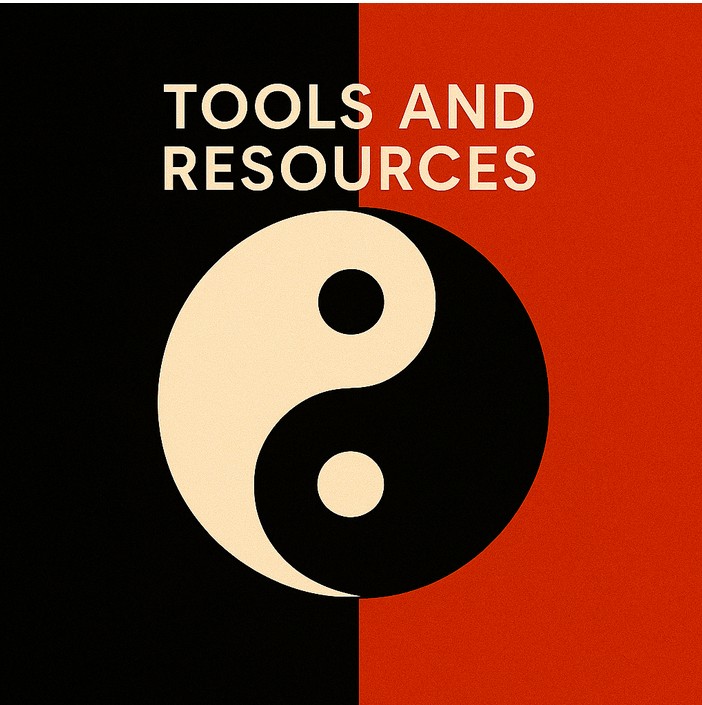
Constructive Mindsets For Dealing With Situational Contradiction

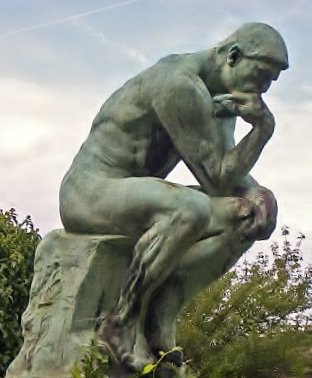



This applies as much to your inner dialogue as it does to the words we use in everyday speech.
Positive self talk is the inner narrative that we run in the back of
our mind that is affirming and runs counter to the ingrained negative
self talk that we all experience. 
If you feel any kind of
resistance to doing this - just do it anyway and see what happens. As the psychologist Dorothy Rowe has said:
Engage With Your Reflective Mind And Let Stillness Speak

Closing Reflection On How To Live With Contradiction
Return from: "How To Live With Contradiction" to: Walking The Talk
Next Article:
Trust The Process - Beyond The Cliche
LATEST ARTICLES
The Power Of Asking The Right Question
 The Power Of Asking The Right Question Lies In The Quest For Insight. To experience the power of asking the right question you must develop the practice of asking questions. The best way to improve th…
The Power Of Asking The Right Question Lies In The Quest For Insight. To experience the power of asking the right question you must develop the practice of asking questions. The best way to improve th…Site Pathways
 Here is a site pathway to help new readers of Zen-Tools navigate the material on this site. Each pathway is based around one of the many key themes covered on this site and contain a 150 word introduc…
Here is a site pathway to help new readers of Zen-Tools navigate the material on this site. Each pathway is based around one of the many key themes covered on this site and contain a 150 word introduc…How To Live With Contradiction - Beyond Thought Let Stillness Speak
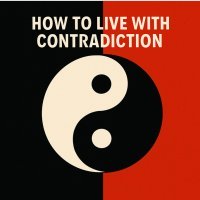 A major impact on so many peoples' lives is the situational contradiction of unfilled realistic expectations. So where does all this leave us? Well here we are, with mental equipment that is more lim…
A major impact on so many peoples' lives is the situational contradiction of unfilled realistic expectations. So where does all this leave us? Well here we are, with mental equipment that is more lim…How To Trust The Process Of Mindfulness - Right Now
 In mindfulness, the process isn’t some distant goal — it's what is happening right now. When we talk about how to trust the process of mindfulness the credibility of the process is heavily dependent…
In mindfulness, the process isn’t some distant goal — it's what is happening right now. When we talk about how to trust the process of mindfulness the credibility of the process is heavily dependent…Inner Mastery For Outer Impact - Mental Clarity For Effective Action
 Insights only matter if they translate into consistent action. In a world crowded with quick fixes and motivational soundbites, the theme “Inner Mastery for Outer Impact” calls us to something more e…
Insights only matter if they translate into consistent action. In a world crowded with quick fixes and motivational soundbites, the theme “Inner Mastery for Outer Impact” calls us to something more e…The Wise Advocate - Helping You Achieve The Very Best Outcome
 The focus of your attention in critical moments of choice either builds or restricts your capacity for achieving the best outcome. When we talk of 'The Wise Advocate' its easy to think of the consigl…
The focus of your attention in critical moments of choice either builds or restricts your capacity for achieving the best outcome. When we talk of 'The Wise Advocate' its easy to think of the consigl…Trust The Process - Beyond The Cliche
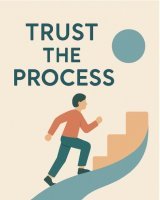 The phrase "trust the process" has become a cliche, the woo-woo mantra of the "self help" industry. Those three little words feel like they ought to mean something useful but hidden behind them are a…
The phrase "trust the process" has become a cliche, the woo-woo mantra of the "self help" industry. Those three little words feel like they ought to mean something useful but hidden behind them are a…The Dopamine Delusion - Why Anticipation Beats Achievement
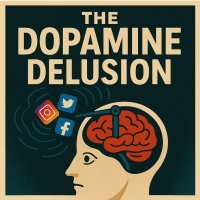 The thrill we feel is not in the having, but in the wanting. The more we have, the more we want. The more things we acquire and the easier things get for us, the more discontent we feel. The more spo…
The thrill we feel is not in the having, but in the wanting. The more we have, the more we want. The more things we acquire and the easier things get for us, the more discontent we feel. The more spo…The Power Of Silence Is Experienced In Your Use Of Language
 Practise the "Beneficial Neurological Delay" for optimal comprehension. The power of silence is experienced in your use of language, specifically: - How you formulate the words you use to think and in…
Practise the "Beneficial Neurological Delay" for optimal comprehension. The power of silence is experienced in your use of language, specifically: - How you formulate the words you use to think and in…Dealing With Setbacks - 5 Questions To Help You Face Discomfort
 How To Counter The Cognitive Shock Of A Setback. Setbacks challenge your instinctual desire for control and comfort, making it unnatural to respond with calm or acceptance. The reason for these instin…
How To Counter The Cognitive Shock Of A Setback. Setbacks challenge your instinctual desire for control and comfort, making it unnatural to respond with calm or acceptance. The reason for these instin…Why Praxis Is The Key To Living A Successful And Stress Free Life
 Praxis Is The Process Of Taking Informed Action To take informed action you need to be prepared with information, knowledge, education and insight. Informed action is objective action that: - Seeks to…
Praxis Is The Process Of Taking Informed Action To take informed action you need to be prepared with information, knowledge, education and insight. Informed action is objective action that: - Seeks to…The Power Of Working With The Front Line
 How To Exercise Influence Without Authority In Complex Systems I first discovered the power of working with the frontline when I was working as a business troubleshooter on large projects, programmes…
How To Exercise Influence Without Authority In Complex Systems I first discovered the power of working with the frontline when I was working as a business troubleshooter on large projects, programmes…
